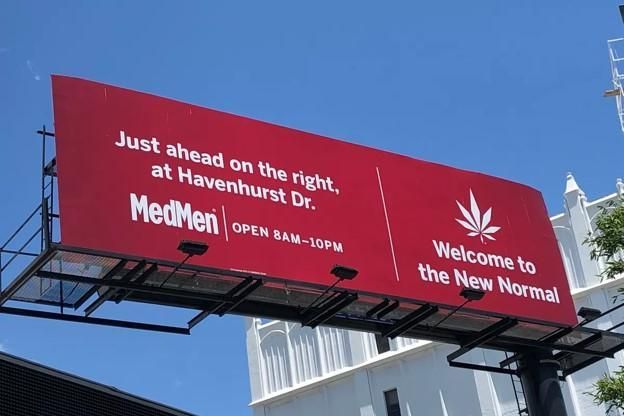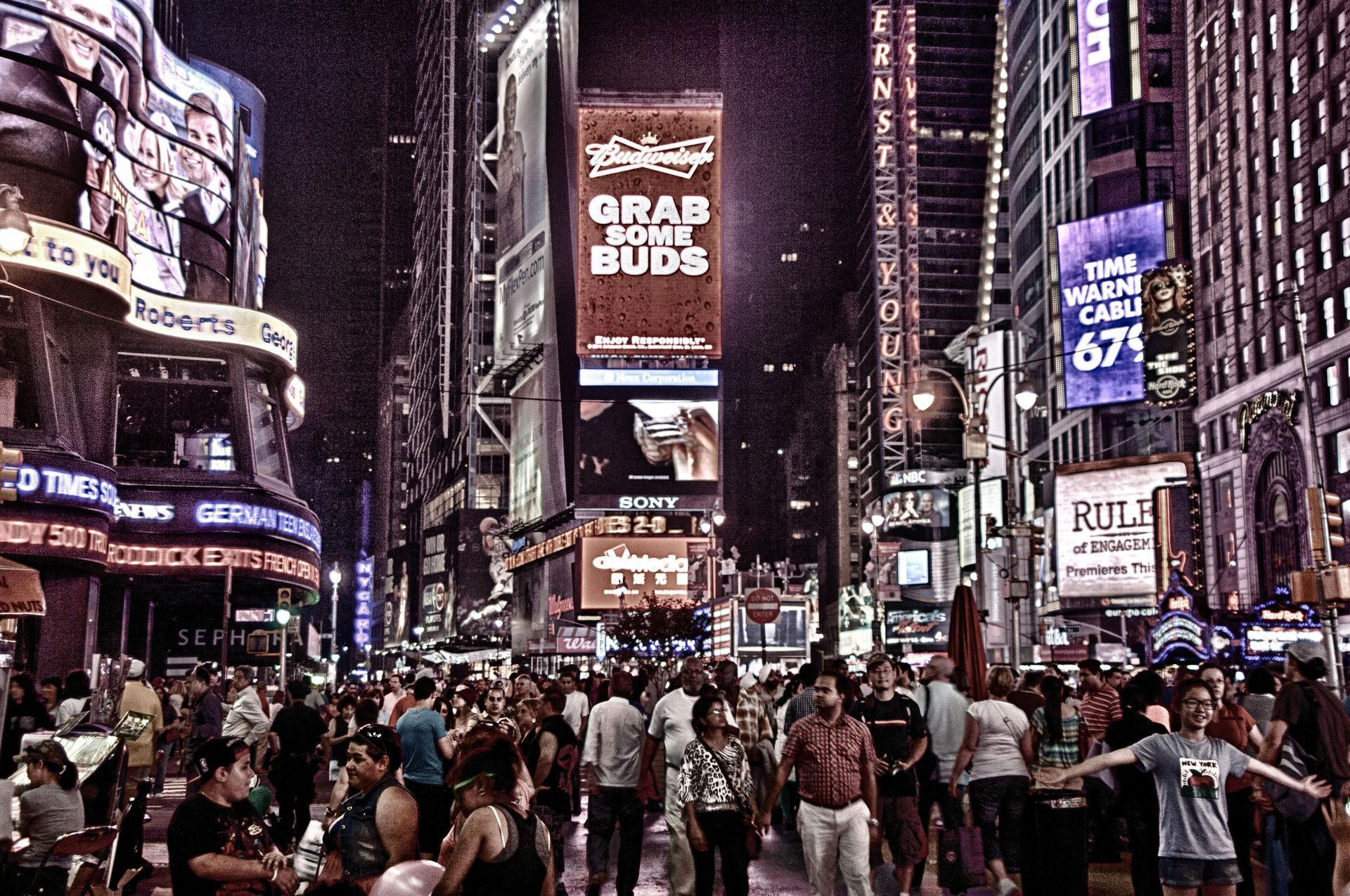OOH Advertising for the Cannabis Industry
The cannabis industry is booming, with more states legalizing its use for medicinal and recreational purposes. However, cannabis advertising faces stringent restrictions, making it challenging for businesses to promote their products effectively. One viable solution is out-of-home (OOH) advertising, which offers a powerful way to reach a wide audience while navigating the regulatory landscape.
Understanding Cannabis Advertising Restrictions
Cannabis advertising is subject to a myriad of regulations that vary significantly between state and local jurisdictions. These advertising rules are designed to prevent the promotion of cannabis products to minors and to ensure that public or private consumption is done responsibly. As a result, traditional forms of advertising, such as television, radio, and digital platforms, often impose stringent guidelines or outright bans on cannabis ads. This has driven cannabis businesses to explore alternative methods like OOH advertising to communicate their message.
The Power of OOH Advertising in the Cannabis Industry
Outdoor Advertising or Out-of-Home Advertising encompasses various formats, including billboards, transit ads, and street furniture. OOH advertising is particularly effective for the cannabis industry due to its high visibility and ability to target specific geographical areas. Here’s why OOH advertising stands out for cannabis brands:
1. High Visibility and Reach
OOH advertising places cannabis ads in high-traffic locations where they can be seen by thousands of people daily. This includes major highways, downtown areas, and public transit hubs. Unlike digital advertising, which can be easily ignored or blocked, OOH ads are unavoidable and continuously visible, ensuring maximum exposure for cannabis products.
2. Geographical Targeting
Cannabis businesses can strategically place OOH ads in locations where cannabis use is legal and in areas with a high concentration of their target audience. This geographical targeting ensures that the ads comply with state and local advertising rules while effectively reaching potential customers.
3. Creative Flexibility
OOH advertising allows for creative freedom that can capture the essence of cannabis brands. High-quality images of cannabis products, bold designs, and compelling messages can be displayed on large billboards or transit ads, making a strong visual impact. This creativity can help differentiate cannabis brands in a crowded market.
Navigating Advertising Rules and Regulations
While OOH advertising offers numerous benefits, cannabis businesses must still navigate a complex web of advertising restrictions. These restrictions often include:
- Prohibitions on depicting actual cannabis products: Many jurisdictions do not allow images of cannabis on advertisements visible to the general public.
- Restrictions on advertising near schools or playgrounds: Ads must be placed a certain distance from areas frequented by minors.
- Mandatory health warnings: Cannabis ads often need to include disclaimers about the health risks associated with cannabis use.
- Ban on health claims: Advertisers cannot make unverified health claims about the benefits of cannabis.
Adhering to these rules requires careful planning and a thorough understanding of local laws. Partnering with an experienced OOH advertising agency specializing in cannabis marketing can help businesses navigate these challenges and ensure compliance.
Effective Strategies for OOH Cannabis Advertising
To maximize the effectiveness of OOH advertising for cannabis products, businesses should consider the following strategies:
1. Localized Campaigns
Design campaigns that resonate with the local community. Understanding the target area's demographics, preferences, and cultural nuances can help create more relatable and impactful ads. For example, using local landmarks or popular phrases can make the ads more engaging.
2. Clear and Compliant Messaging
Craft messages that are clear, concise, and compliant with advertising rules. Avoid making health claims or depicting cannabis consumption. Instead, focus on brand identity, product quality, and unique selling points. Highlighting organic growth, sustainable practices, or local production can attract health-conscious consumers.
3. Leverage Data and Analytics
Utilize data and analytics to measure the performance of OOH campaigns. Tools like geofencing can track the effectiveness of ads in driving traffic to dispensaries or increasing brand awareness. Adjusting strategies based on data insights can optimize campaign results and ROI.
4. Integration with Digital Campaigns
Combine OOH advertising with digital marketing efforts for a holistic approach. Use QR codes on billboards to direct viewers to websites or social media pages, creating an interactive experience. This integration can enhance engagement and provide measurable results.
Case Studies: Successful OOH Cannabis Campaigns
1. MedMen
MedMen, a leading cannabis retailer, has effectively used OOH advertising to build brand awareness. Their campaigns feature sleek, modern designs with simple messages emphasizing quality and lifestyle. By strategically placing ads in major cities' high-traffic areas, MedMen has reached a broad audience while adhering to advertising regulations.
2. Dosist
Dosist, known for its dose-controlled cannabis products, launched a successful OOH campaign in California. Their minimalist ads focus on the science and precision behind their products, appealing to health-conscious consumers. The campaign included billboards, transit ads, and posters in locations with high foot traffic, ensuring widespread visibility.
3. Lowell Herb Co.
Lowell Herb Co. utilized OOH advertising to promote its premium cannabis products. Their visually striking billboards featured bold graphics and catchy slogans, capturing the attention of passersby. Lowell Herb Co. effectively increased brand recognition and sales by targeting areas frequented by their target demographic.

Future Trends in OOH Cannabis Advertising
The landscape of cannabis advertising is continually evolving. Here are some emerging trends in OOH advertising for the cannabis industry:
1. Digital OOH (DOOH) Advertising
Digital billboards and interactive displays offer dynamic and engaging ways to promote cannabis products. DOOH allows for real-time updates and interactive features, such as touchscreens or augmented reality, providing a more immersive experience for consumers.
2. Programmatic Advertising
Programmatic OOH advertising leverages automated technology to buy and place ads based on data insights. This approach can optimize ad placements and targeting, ensuring that cannabis ads reach the right audience at the right time.
3. Sustainable Advertising
As sustainability becomes a key consumer concern, cannabis brands increasingly focus on eco-friendly advertising solutions. This includes using biodegradable billboard materials and incorporating green messaging in their campaigns.
Conclusion
OOH advertising presents a valuable opportunity for cannabis businesses to promote their products and build brand awareness within the constraints of regulatory environments. By understanding and navigating advertising restrictions, leveraging creative strategies, and staying ahead of emerging trends, cannabis brands can effectively utilize OOH advertising to reach their target audience and drive growth.
Embrace the power of OOH advertising to elevate your cannabis brand and stand out in a competitive market. With the right approach, your cannabis ads can capture attention, convey your brand message, and contribute to the overall success of your business.
TALK TO A PRO
We're here to bring your brand to life!
Stay Connected with BrandXR
Create Augmented Reality for Free!
Create, Publish, and Measure 3D Augmented Reality Experiences Without Having to Code.














